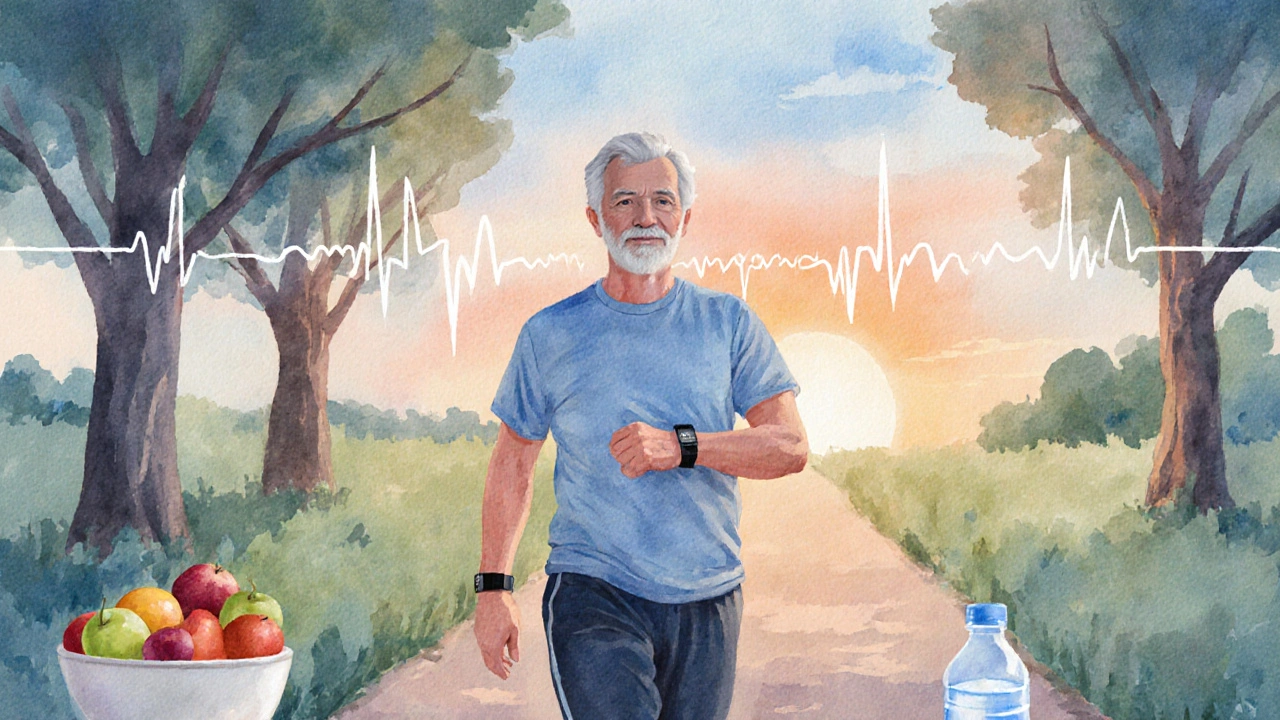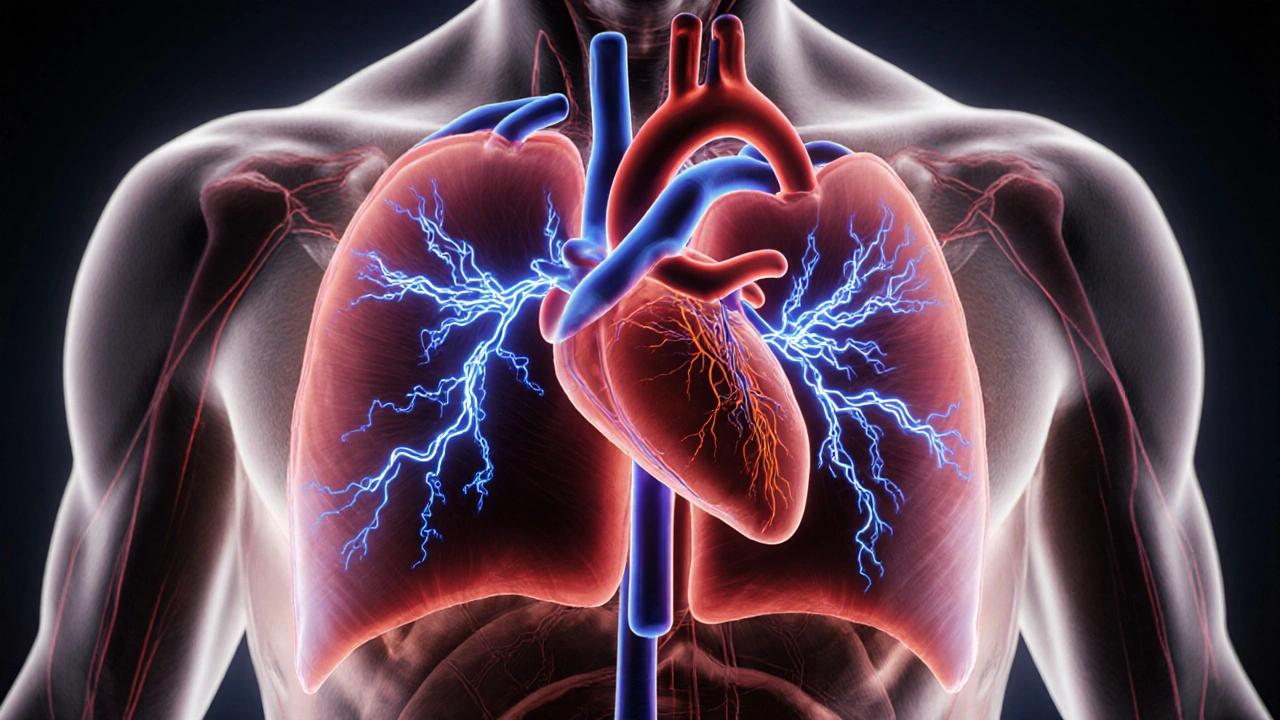CHA2DS2-VASc Stroke Risk Calculator
The CHA2DS2-VASc score is a critical tool used by cardiologists to assess stroke risk in patients with atrial fibrillation. It helps determine whether anticoagulation (blood thinners) is recommended to prevent stroke.
Quick Summary / Key Takeaways
- Atrial fibrillation (AF) is the most common sustained heart rhythm problem, affecting millions worldwide.
- Cardiac electrophysiologists specialize in diagnosing and treating abnormal heart rhythms, especially AF.
- Treatment options range from medication and lifestyle tweaks to advanced procedures like catheter ablation.
- Risk assessment tools such as the CHA2DS2‑VASc score guide stroke‑prevention decisions.
- Choosing the right strategy involves weighing symptom burden, underlying health, and personal preferences.
What is Atrial Fibrillation?
Atrial fibrillation is an irregular, often rapid heart rhythm that originates in the atria, the upper chambers of the heart. Instead of beating in a coordinated fashion, the atria quiver, causing the ventricles to receive erratic signals. This can lead to palpitations, shortness of breath, fatigue, and, in severe cases, heart failure.
By 2025, researchers estimate that about 12 million adults in North America alone live with AF, and the prevalence rises sharply after age 65. The condition isn’t just a nuisance; it triples the risk of stroke because blood can pool in the poorly contracting atria, forming clots that may travel to the brain.
When to See a Cardiac Electrophysiologist
A cardiac electrophysiologist (EP) is a cardiologist with extra training in the heart’s electrical system. While a general cardiologist can diagnose AF and start basic therapy, an EP steps in when you need:
- Complex rhythm analysis beyond a standard ECG or Holter monitor.
- Evaluation for procedural options such as Catheter Ablation.
- Management of drug‑refractory AF or persistent symptoms despite medication.
- Decision‑making around stroke‑prevention devices, for example Left Atrial Appendage Closure.
In practice, you might be referred after a few failed attempts at rate or rhythm control, or if you have structural heart disease that complicates medication use.

How AF is Diagnosed
The diagnostic journey usually begins with a simple 12‑lead electrocardiogram (ECG). If the rhythm is intermittent, doctors may order a Holter Monitor or a wearable patch that records heart activity for up to two weeks. Advanced imaging-like a transthoracic echocardiogram-helps rule out underlying valve disease or left‑ventricle dysfunction that may influence treatment choice.
Risk stratification for stroke uses the CHA2DS2‑VASc score, a point‑based system that accounts for factors such as congestive heart failure, hypertension, age≥75, diabetes, prior stroke, vascular disease, and sex. A score of 2 or higher in most patients warrants anticoagulation.
Treatment Pathways: Rate vs. Rhythm Control
Historically, doctors have chosen between two broad strategies:
| Aspect | Rate Control | Rhythm Control |
|---|---|---|
| Goal | Keep heart rate within target (usually 60‑100bpm) while accepting AF rhythm. | Restore and maintain normal sinus rhythm. |
| Typical Meds | Beta‑blockers, non‑dihydropyridine calcium channel blockers, digoxin. | Antiarrhythmic drugs (e.g., amiodarone, flecainide) or procedural therapy. |
| Pros | Often easier to manage, fewer drug side‑effects, suitable for older patients. | Potentially eliminates symptoms, may improve quality of life. |
| Cons | Persistent irregular rhythm may cause fatigue; does not reduce stroke risk beyond anticoagulation. | Higher risk of medication toxicity; procedures carry procedural risks. |
| Best for | Patients with minimal symptoms, significant comorbidities, or contraindications to antiarrhythmics. | Younger, active patients, or those whose symptoms persist despite rate control. |
Recent trials (e.g., EAST‑AFNET 4, 2020) suggest early rhythm control may reduce cardiovascular outcomes, especially when ablation is performed within a year of diagnosis. However, the decision remains individualized.
Procedural Options Offered by an Electrophysiologist
Catheter Ablation is the most common EP procedure for AF. Using specialized catheters, the EP creates small, targeted burns (radiofrequency) or freezes (cryoballoon) tissue around the pulmonary veins to block errant electrical signals.
Success rates vary by AF type: about 70‑80% of patients with paroxysmal AF remain in sinus rhythm after a single procedure, while persistent AF yields 60‑70% success, often requiring a repeat.
Other procedural tools include:
- Left Atrial Appendage Closure devices (e.g., Watchman) for patients who cannot tolerate long‑term anticoagulation.
- AV node ablation with pacemaker implantation for refractory rate control in select cases.
Complications are rare but can include cardiac tamponade (≈1%), pulmonary vein stenosis, or phrenic nerve injury (cryoballoon). EPs mitigate these risks with intracardiac echocardiography and real‑time mapping.

What to Expect During an Electrophysiology Study
Before a definitive ablation, the EP often performs an electrophysiology (EP) study. This diagnostic test maps the heart’s electrical pathways using catheters placed via the femoral vein. The procedure lasts 1‑2hours, and patients are usually awake or lightly sedated.
If the study confirms trigger sites, the EP proceeds directly to ablation. Otherwise, they may recommend continued medical therapy. Recovery is short-most patients go home the same day or after an overnight observation.
Post‑Procedure Care and Lifestyle Tips
After ablation, doctors advise a brief period of reduced activity (24‑48hours) and avoidance of heavy lifting for about a week. Anticoagulation typically continues for at least 2‑3months, then reassessed based on CHA2DS2‑VASc score.
Long‑term lifestyle modifications help keep AF at bay:
- Stay active-aim for at least 150minutes of moderate aerobic exercise per week.
- Limit alcohol and caffeine, which can provoke episodes.
- Control blood pressure, diabetes, and weight; obesity is a strong predictor of AF recurrence.
- Manage sleep apnea with CPAP; untreated apnea increases AF risk.
Regular follow‑up with your EP or cardiologist ensures early detection of any recurrence and adjustment of therapy.
Decision Checklist: Is an Electrophysiology Referral Right for You?
- Do you have persistent symptoms (palpitations, fatigue) despite rate‑control meds?
- Is your AF classified as paroxysmal, persistent, or long‑standing persistent?
- Do you have structural heart disease, heart failure, or contraindications to antiarrhythmic drugs?
- Is your CHA2DS2‑VASc score ≥2, indicating a need for anticoagulation?
- Are you willing to undergo a short procedural recovery in exchange for potential symptom relief?
If you answered “yes” to several of these, a consultation with a cardiac electrophysiologist can clarify your options and set realistic expectations.
Frequently Asked Questions
Can atrial fibrillation be cured?
There is no permanent cure, but many patients achieve long‑term sinus rhythm through medication, lifestyle change, or catheter ablation. Even after a successful ablation, some may need repeat procedures or occasional meds.
How risky is catheter ablation?
Modern ablation is very safe. Major complications occur in less than 2% of cases, and most patients return to normal activities within a week.
Do I still need blood thinners after ablation?
Yes, usually for at least 2‑3months, then the need is reassessed based on the CHA2DS2‑VASc score and any residual AF episodes.
What’s the difference between a cardiac electrophysiologist and a regular cardiologist?
Both are heart doctors, but an EP has additional fellowship training focused on the heart’s electrical system, specialized mapping tools, and procedural expertise in ablation and device implantation.
Is lifestyle change enough for mild atrial fibrillation?
For many with occasional episodes, weight loss, reduced alcohol, blood pressure control, and regular exercise can significantly lower episode frequency. However, monitoring is still advised to catch progression.
Understanding how atrial fibrillation works and the unique role of a cardiac electrophysiologist empowers you to make informed choices about treatment. Whether you stay on medication, opt for ablation, or combine approaches, a clear plan with your EP can keep your heart rhythm-and your life-on track.







Comments
mike putty
12 October 2025Hey, it’s totally understandable to feel overwhelmed when you first hear about the CHA₂DS₂‑VASc score.
Take it step by step – each point just represents a piece of your health picture.
When you sit down with your electrophysiologist, they’ll walk you through why each factor matters.
Remember, the goal is to keep your stroke risk as low as possible, not to scare you.
Stay proactive and keep asking questions; you’re already on the right track.
Alex V
12 October 2025Oh sure, because counting points on a chart is exactly the thrilling adventure we all signed up for.
Nothing says “fun” like a spreadsheet of your ailments, right?
Let’s just hope the doc doesn’t hand you a quiz at the end.
Robert Jackson
12 October 2025Right, first off, the term “atrial fibrillation” is not “afibrilation” – proper spelling matters.
Secondly, the CHA2DS2‑VASc system does not magically cure anything; it merely stratifies risk.
And for the love of the Union, stop mixing up “anticoagulation” with “anticoagulaton”.
Lastly, a proper UK ablation centre follows strict protocols, unlike the shoddy setups abroad.
Jean-Sébastien Dufresne
13 October 2025Wow!!! This stuff is seriously a game‑changer for patients!!! 😄
When you finally sit with an EP, the maps they pull up look like sci‑fi, and the catheters? Pure precision!
Don’t forget the post‑procedure diet-low‑salt, low‑caffeine, and absolutely no binge‑watching marathons for a week!!!
Everything clicks together like a well‑orchestrated symphony!!! 🎉
Patrick Nguyen
13 October 2025Indeed, the procedural workflow aligns with current ESC guidelines and optimises patient outcomes.
Adherence to post‑ablation anticoagulation protocols remains essential.
Patrick Bread
13 October 2025Skipping the meds entirely is a gamble you don’t want to take.
Fiona Doherty
14 October 2025Honestly, if you’re still relying on “lifestyle tweaks” after two episodes, you’re just kidding yourself.
Either step up to a proper EP evaluation or keep living with that unpredictable ticker.
There’s no magic pill, just real medicine.
Neil Greer
14 October 2025Hey mate, fair point – but a lot of folks need that gentle nudge before they commit to an ablation.
Support from friends can make the difference.
Fionnuala O'Connor
15 October 2025Take it one day at a time focus on your heart health and listen to your doctor you’ve got this
Christopher MORRISSEY
15 October 2025When evaluating atrial fibrillation, it is paramount to consider both the symptom burden and the underlying comorbidities that may influence therapeutic decisions.
First, the CHA₂DS₂‑VASc score provides a quantitative assessment of stroke risk, incorporating factors such as congestive heart failure, hypertension, age, diabetes, prior stroke, vascular disease, and female sex.
Each point incrementally raises the absolute risk, thereby guiding clinicians toward anticoagulation initiation when the threshold of two points is surpassed.
Second, the decision between rate control and rhythm control must be individualized; younger, active patients often benefit from rhythm control strategies, whereas older individuals with multiple comorbidities may find rate control more tolerable.
Third, the evolution of catheter ablation techniques, including radiofrequency and cryoballoon approaches, has markedly improved success rates, particularly in paroxysmal atrial fibrillation, where single‑procedure freedom from arrhythmia can exceed 70 %.
Nevertheless, persistent and long‑standing persistent forms of AF present greater challenges, frequently necessitating repeat procedures or adjunctive pharmacotherapy.
Fourth, patient selection for ablation should incorporate structural considerations, such as left atrial size and fibrosis burden, which can be appraised via cardiac MRI or advanced echocardiographic techniques.
Fifth, alternative strategies, including left atrial appendage closure, provide a viable option for those contraindicated to long‑term anticoagulation, albeit with their own procedural risk profile.
Sixth, post‑ablation management remains crucial; anticoagulation is typically continued for a minimum of three months, after which the CHA₂DS₂‑VASc score is re‑evaluated in the context of any residual arrhythmia.
Seventh, lifestyle modification cannot be overstated – weight reduction, blood pressure control, treatment of sleep apnea, and moderation of alcohol and caffeine intake collectively diminish recurrence risk.
Eighth, shared decision‑making empowers patients, allowing them to weigh quality‑of‑life improvements against procedural risks and long‑term medication burdens.
Ninth, regular follow‑up, whether through clinic visits, telemetry, or wearable devices, facilitates early detection of recurrence and timely therapeutic adjustments.
Tenth, emerging data from trials such as EAST‑AFNET 4 suggest that early rhythm control, when feasible, may confer mortality and morbidity benefits beyond symptom relief.
Eleventh, the interdisciplinary collaboration between electrophysiologists, general cardiologists, and primary care providers ensures a cohesive care pathway.
Twelfth, education about the signs of stroke and the importance of adherence to anticoagulation is essential for all patients, regardless of rhythm strategy.
Thirteenth, health‑system factors, including access to specialized EP centers, can influence outcomes, underscoring the need for equitable referral pathways.
Finally, a comprehensive, patient‑centred approach that integrates risk stratification, procedural expertise, lifestyle optimization, and continuous monitoring offers the best chance for long‑term success in managing atrial fibrillation.
Louie Lewis
15 October 2025The mainstream narrative hides the fact that industry funding skews guideline recommendations and that true autonomy lies beyond the published consensus.
Consider the hidden cost of implants and the long‑term data gaps that remain unaddressed.
Only by questioning the established paradigm can we hope to uncover unbiased therapeutic pathways.
Stay vigilant.
Eric Larson
16 October 2025Whoa!!! This whole AF saga feels like a roller‑coaster ride!!!
One minute you’re on meds, the next you’re in a cath lab, and then-boom-back to the clinic for a check‑up!!!
The emotional whiplash is real, and the stakes are literally life‑or‑death!!!
Hang in there, folks, you’re not alone!!!
Kerri Burden
16 October 2025From a systems‑biology perspective, the interplay between atrial substrate remodeling and autonomic tone creates a feedback loop that sustains AF.
Targeted upstream therapy, such as renin‑angiotensin blockade, can modulate this loop, but the evidence remains heterogeneous.
In clinical practice, integrating electrophysiological mapping with biomarker profiling may pave the way for precision AF management.
Ultimately, the goal is to harmonize rhythm control with stroke prophylaxis in a patient‑specific framework.